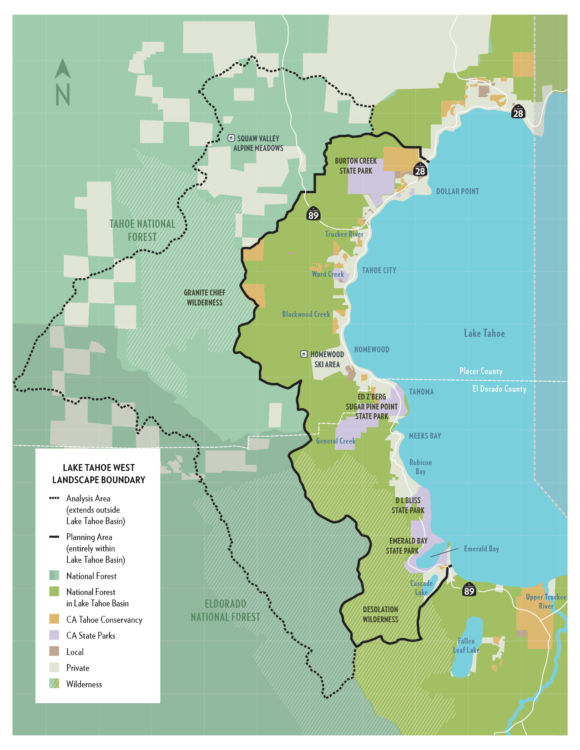 |
Preserving the big, fire-resistant
Jeffrey pine trees; removing a
lot of torchy White Fir. |
Finally, we are reaching the final stages of implementation of the Sagehen Forest Project and other forestry projects in the basin plantations: logging and fire!
The hand-thinning and mastication units in the Sagehen Forest Project were completed in 2016. We tried to start burning the piles last fall, but they were still too green. All summer long, firewood cutters have been removing the logs from the piles for us (including volunteers from
Northstar's Epic Promise Day), and the remaining slash is now dry and ready to burn as soon as snow comes to prevent the fires from taking off. The burn piles have a small bit of plastic sheet in them to keep the core of the pile dry enough to light after the ground gets too wet to burn.
Bamford, the contractor for the units with saw logs on them, finally executed his contract at the eleventh hour: it was awarded 6 years ago. The scary Transformer-like machines started processing logs about a week ago, and they will work until weather makes the ground too wet to continue. They'll return next season to finish. It's an impressive operation.
But, forest restoration projects are not complete until low-intensity ground fire returns to cycle nutrients and take over the task of thinning the forest before it burns catastrophically. Cool fire also removes duff layers that impede water infiltration, letting it run off and escape rather than replenish the groundwater.
 |
That guy looks so unsafe!
|
This week, the Forest Service finally put fire into
the plantations that they masticated in 2014. It takes a long time for all the stars to line up: air quality, fuel moisture, no wind, a storm on the way to put the fire out afterwards, fire crews in position, funding. It's amazing it ever gets done at all. Hopefully, public resistance to light smoke from prescribed fires is being overcome by the overwhelming smoke from catastrophic burns.
In the long run, this stuff is going to burn. As Craig Thomas of Sierra Forest Legacy says, "There is no 'no fire' option for California." We need to decide whether we want to work with fire, or continue to be its victim. "With fire, we've been trying to completely suppress a process that is as natural as rain...and it's not working out well for us. The next generation is going to pay our air emissions debt."
 |
| Feller-buncher head |
Sagehen is working with the
Living Forests project to try to build a small wood timber industry to keep some of the wood out of the flames, or at least burn it in a controlled furnace to make heat and energy.
Sagehen Forest Project photos (more recent photos are later in the album).
Of course, none of this would be possible without all of our wonderful partners in the Sagehen Forest Project including our funders at the
Sierra Nevada Conservancy, National Forest Foundation,
US Forest Service, Tahoe National Forest,
Wildlife Conservation Board,
Joint Fire Science Program,
UC Berkeley, and others. Heartfelt thanks!









